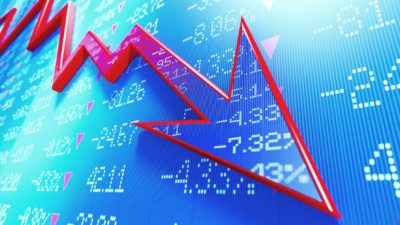This article was originally published on Fool.com. All figures quoted in US dollars unless otherwise stated.
Like many businesses, Mastercard Inc (NYSE: MA) has felt the impact of the COVID-19 pandemic. Rising unemployment and social distancing measures have reduced consumer spending in many key markets, from entertainment to travel. As a result, Mastercard's revenue has dropped over 10% during the first nine months of 2020. But for investors willing to see past the present, Mastercard's culture of innovation and operational excellence positions the company for strong growth in the years ahead. Here are three reasons why Mastercard looks set to succeed.
1. An enormous market opportunity
During Mastercard's most recent Investment Community Meeting, management detailed the company's $235 trillion opportunity, which spans three distinct payment markets.
|
Person-to-Merchant (P2M) |
Business-to-Business (B2B) |
Peer-to-Peer (P2P) and Disbursements |
Total Global Opportunity |
|---|---|---|---|
|
$50 trillion |
$125 trillion |
$60 trillion |
$235 trillion |
Astonishingly, card-based transactions currently account for only $30 trillion (roughly 13%) of all payments, while cash and checks still represent more than double this figure, at $68 trillion. This means Mastercard has plenty of room to grow its payment card business, which includes consumer and commercial products, targeting both P2M and B2B payments. However, transfers from one bank account to another, also known as automated clearing house (ACH) transactions, represent an even larger opportunity, at $139 trillion. To address this, Mastercard offers a variety of account-based payment products.
For example, the Mastercard Bill Pay Exchange targets the P2M market, allowing consumers to view and pay all their bills from one application, while providing billers with a cheaper, more efficient alternative than existing products. In the B2B market, Mastercard Track enables automated payments between buyers and suppliers in a variety of ways, including card- and account-based transfers. This gives suppliers the flexibility to choose how they'd like to be paid, while improving efficiency and security on both sides of the transaction. Another product, Mastercard Send, enables real-time P2P payments and business-to-consumer (B2C) disbursements, both domestically and across borders. This technology allows companies like PayPal Holdings Inc (NASDAQ: PYPL) and Square Inc (NYSE: SQ) to instantly pay merchants, or to offer instant bank transfers to consumers using digital wallets.
Innovations like these underscore Mastercard's relevance: Rather than falling behind high-growth fintech companies, Mastercard remains a critical player in the payments space, providing card- and account-based solutions that address an enormous market opportunity.
2. A shift toward digital payments and e-commerce
The world is becoming more digital, and the pandemic has only accelerated that trend. According to research conducted by Mastercard, digital B2B payments are the new normal for many businesses in North America. In an effort to improve cash flow, 77% of small businesses have adopted a digital service like payment collection or electronic invoicing. This trend should drive adoption of B2B payment products like Mastercard Track, helping the company grow its revenue and expand its customer base.
Mastercard reported similar trends in consumer spending. More consumers are making purchases through digital channels, as the pandemic has accelerated the adoption of e-commerce around the world. For instance, roughly 11% of total retail sales in the United States occurred online in 2019, but that figure doubled to 22% in April and May this year, as business closures and social distancing kept consumers at home.
And that trend is still gaining traction -- Mastercard is forecasting a 33% increase in e-commerce sales during the 2020 holiday season. This should boost revenue in two ways: both by increasing Mastercard's payment and transaction volume, and by allowing Mastercard to offer additional value-added services. For instance, Mastercard's Digital Enablement Services (MDES) provides tokenization, helping customers like Amazon and MercadoLibre prevent fraud by allowing consumers to securely store and use payment cards online.
Together, these trends are the driving force behind Mastercard's enormous market opportunity.
3. A durable competitive advantage
Mastercard's platform connects thousands of financial institutions and millions of merchants in over 210 countries and territories. This creates a network effect and forms the foundation of Mastercard's competitive advantage -- each new consumer adds value for all existing merchants, and each new merchant adds value for all existing consumers. But this scale also creates cost advantages, meaning increases in revenue can have outsized impacts on operating income. This allows Mastercard to achieve a higher operating margin than smaller competitors, meaning it can outspend rivals in areas like research and development or sales and marketing without compromising profitability.
Of course, this dynamic can work against Mastercard, too. Visa Inc (NYSE: V) offers a similar range of payment solutions on an even larger scale, with an estimated 42% market share according to the Nilson Report. By comparison, Mastercard's market share is estimated at 25%. As a result, Visa's operating margins tend to be about 10 percentage points higher.
Yet Mastercard is the smaller company, and its revenue has grown more quickly in recent years, suggesting that it may offer more upside in the long run.
The bottom line
Investors should pay attention to Mastercard's payment and transaction volumes. When these metrics rise or fall, so does revenue, and both numbers indicate how effectively Mastercard is executing on its growth strategy. Investors should also keep an eye on Mastercard's operating margin. Any drop there could signal that the company is losing market share to competitors.
Still, over the last decade Mastercard has shown incredible resilience, transforming from a card company into a more diverse payment platform. This innovation has allowed Mastercard to build a virtually impenetrable moat around its business, and that should sustain growth for many years to come.
This article was originally published on Fool.com. All figures quoted in US dollars unless otherwise stated.









